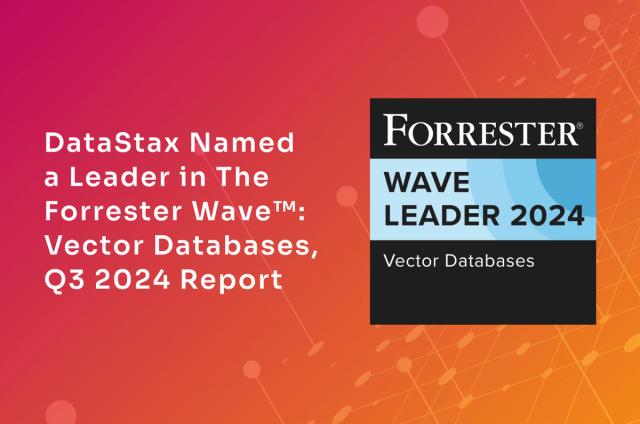From Databases to Clouds

This is an excerpt from the DataStax whitepaper "Managing the Hybrid and MultiCloud Future" which lists 9 ways for you to stay ahead of the hybrid cloud curve.
When cloud computing first appeared on the scene, it was a point-to-point proposition: Users subscribed to a service for a specific function—whether it was a developer seeking compute power, a sales manager seeking customer contact capabilities, or a team leader seeking a collaboration platform.
Now, things are more complicated. Clouds are built upon clouds, which interface with other clouds, resulting in what is essentially a cloud fabric extending across enterprises. At the same time, legacy or on-premise systems haven’t gone away, and continue to expand. It’s up to data managers to decide where standard databases end and the cloud begins, and ensure the accessibility and proper governance of information assets across an increasingly complex environment.
It’s notable that cloud has become a mainstream environment for data managers. Half of the database managers participating in a recent survey conducted by Unisphere Research, a division of Information Today, Inc., indicated they are regular cloud users, and a sizable portion are committing most of the data to be managed to cloud providers.
While cloud is seen as the go-to environment for modernizing IT strategies and managing ever increasing volumes of data, it also presents a bewildering array of options. Respondents to the Unisphere survey agree that hybrid is an overall architectural solution for their applications—75% prefer a hybrid cloud architecture that includes both on-premise and public cloud components. In addition, they expect the transition to a hybrid cloud scenario to be seamless. Among those respondents employing a premium virtualization architecture and considering a hybrid cloud architecture, more than two-thirds expect all the features that have been available to them on-premise to be fully available in the cloud as well.
There has been some confusion in the market over the differences between hybrid and multi-cloud implementations.
Both involve working with more than a single platform, but that’s where the similarities end. Multi-cloud approaches involve employing two or more providers to support specific workloads, while hybrid cloud approaches combine public cloud services with on-premise systems—traditional and private cloud environments—in an integrated manner. Multi-cloud is about choice, while hybrid is about seamless delivery.
Either way, enterprises will be running hybrid clouds in conjunction with multicloud services, providing advantages to data environments, as well as challenges. The good news is that cloud vendors are constantly adding tools and features that assist data managers in growing and monitoring their environments and remediating issues. Nonetheless, cloud vendors cannot address the organizational issues that arise as data is moved across many different platforms.
Here are nine points to consider in preparing for the hybrid and multi-cloud world:
1.DOCUMENT HOW CLOUD APPLICATIONS ARE BEING USED WITHIN THE ENTERPRISE.
Data may not necessarily be passed from on-premise to cloud services, but may be transmitted from cloud to cloud. This has implications for data governance and security, especially as many cloud services are being contracted outside the purview of IT or data managers. It’s important to understand which cloud services are being adopted for key functions. In addition, end users need to be educated on the impact on data governance.
2. AVOID COMPLEXITY AS MUCH AS POSSIBLE.
Moving to multi-cloud and hybrid cloud environments means having differing layers of cloud within the enterprise. It is important to understand who is paying for and using these cloud services, and whether there are duplications or new silos as a result. Look for instances of cloud services that are being purchased, but are never or rarely used.
3. HOLD CLOUD PROVIDERS ACCOUNTABLE.
Many external cloud agreements absolve cloud providers from data breaches or losses. Data managers need to insist on accountability for vulnerabilities that occur on the provider side. They must understand what controls and safeguards are in place, and what happens to the data when the contract is changed or ended.
4. STANDARDIZE AS MUCH AS POSSIBLE.
The various components of cloud offerings—including storage, virtual machines, and data formats—should be aligned across the enterprise. Data managers need to focus on a cloud architectural approach that enables users and developers to quickly connect to the data sources they need for the business.
5. ACCELERATE DATA AGGREGATION.
Data within multiple and hybrid environments should flow freely, without obstacles. Data integration takes on a new urgency. Data should be stored in environments that are rapidly accessible to all cloud or on-premise services.
6. ENHANCE DATA GOVERNANCE ACROSS CONSOLIDATED PLATFORMS.
The viability and security of data should be consistent across all cloud services. Cloud providers need to be active in this process, offering policy engines and compliance tools. At the same time, enterprises need to exercise due diligence in ensuring the security of their data, regardless of where it resides.
7. DRIVE GREATER SELF-SERVICE THROUGH ADVANCED ANALYTICS.
Lines of business are more responsive to customers when self-service applications are available that enable business users to rapidly conduct analyses from datasets. The power of these self-service capabilities can be greatly enhanced when they connect to aggregated data environments that draw capabilities and resources from all pertinent sources.
8.UPGRADE APPROACHES TO DISASTER RECOVERY AND BUSINESS CONTINUITY.
While cloud services themselves ease the backup and recovery process for applications and data, this can be a more difficult undertaking in hybrid and multicloud environments. At the same time, multi-cloud services help enterprises assure continuity, with highly available backups.
9. MONITOR AND MEASURE.
Keeping track of usage across disparate environments is another challenge that data managers face. A key aspect of hybrid and multi-cloud management is tracking resource consumption and spending. Cloud providers should provide access and tools for metering and monitoring cloud adoption, providing transparency to enterprises. Hybrid and multi-cloud environments are becoming commonplace, and they require entirely new ways of thinking about data management. With this change, data management, to a large extent, becomes a shared endeavor—but data governance and security is still the ultimate responsibility of the enterprise.
Thanks for reading this excerpt from the DataStax whitepaper "Managing the Hybrid and MultiCloud Future," tune in next week when we'll release another excerpt or click here to download the full asset.




